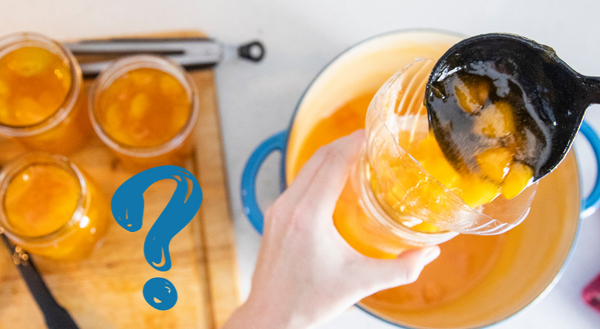
Canning food at home has been around since the early 1800s, with the first mason jar designed for canning distributed in 1884. Canning, freezing, and drying is a science and has evolved over the last 100 years. The only safe way to can food at home and store at room temperature is by using either a boiling water bath or pressure canning method, depending on the food. Canning in a pressure cooker, microwave, oven, sun, and open kettle method is unsafe and could lead to deadly bacteria growing in the jars. Based on many of my hands-on canning classes this year, I have found individuals are doing open kettle canning without realizing what it is called and why it is unsafe.
What is open kettle canning?
Open kettle canning is when individuals heat food to a boil in a pot or “kettle”, place it in a jar, and put the lid on the jar without further processing. Older cookbooks have suggested using this unsafe method and it is no longer recommended.
Why is open kettle canning not safe?
When processing food in a canner, temperature and time are two vital steps to prevent harmful bacteria, including yeast and mold, from growing. There is more to canning than just heating up the food on the stove. Research-based canning recipes are tested to ensure harmful bacteria are destroyed at a defined temperature and a specific amount of time. Low-acid foods such as meat, vegetables, and soups require pressure canning where the temperature reaches between 240°F and 250°F for a defined period. Boiling water bath canning is typically for high-acid foods such as making jams, jellies, preserves, salsas, or pickles, and temperatures reach 212°F. Scientifically tested recipes can be found through the National Center for Home Food Preservation, the USDA, or by calling a local extension office.
My jars are sealed when I open kettle canned. Are they safe?
No. Although the jars may have sealed initially, they haven’t been processed in boiling water or pressure canner to destroy bacteria inside the jar. The bacteria in the jar could lead to the growth of yeast, mold, or deadly harmful bacteria. Additionally, removing the jars from the canner during the cooling process creates a stronger vacuum seal by pushing air out and preventing harmful bacteria from getting in the jar.
Always follow a research-based canning recipe and method. If the jars do not seal within 24 hours, check the sealing surface of the lid for any damage or nicks, and re-process or store food in the refrigerator. Are you curious about canning or other food preservation methods? Check out the Illinois Extension’s Food Preservation website.
Source:
USDA Evolution of Canning
About the Author: Lisa Peterson is an Illinois Extension Nutrition and Wellness Educator serving Christian, Jersey, Macoupin, and Montgomery counties in west central Illinois. Her interests include using social media marketing and technology to translate research-based information in food safety, optimal nutrition, preparing and safely preserving food, preventing and delaying chronic disease through diet management, and developing innovative methods for implementing wellness in the workplace. She has a passion for translating science-based research for consumers to use locally. She dedicates her work to improving the lives of the citizens of Illinois by providing them with the tools to make safe, healthy, and informed decisions. You can reach Lisa at lap5981@illinois.edu or at (217) 532-3941